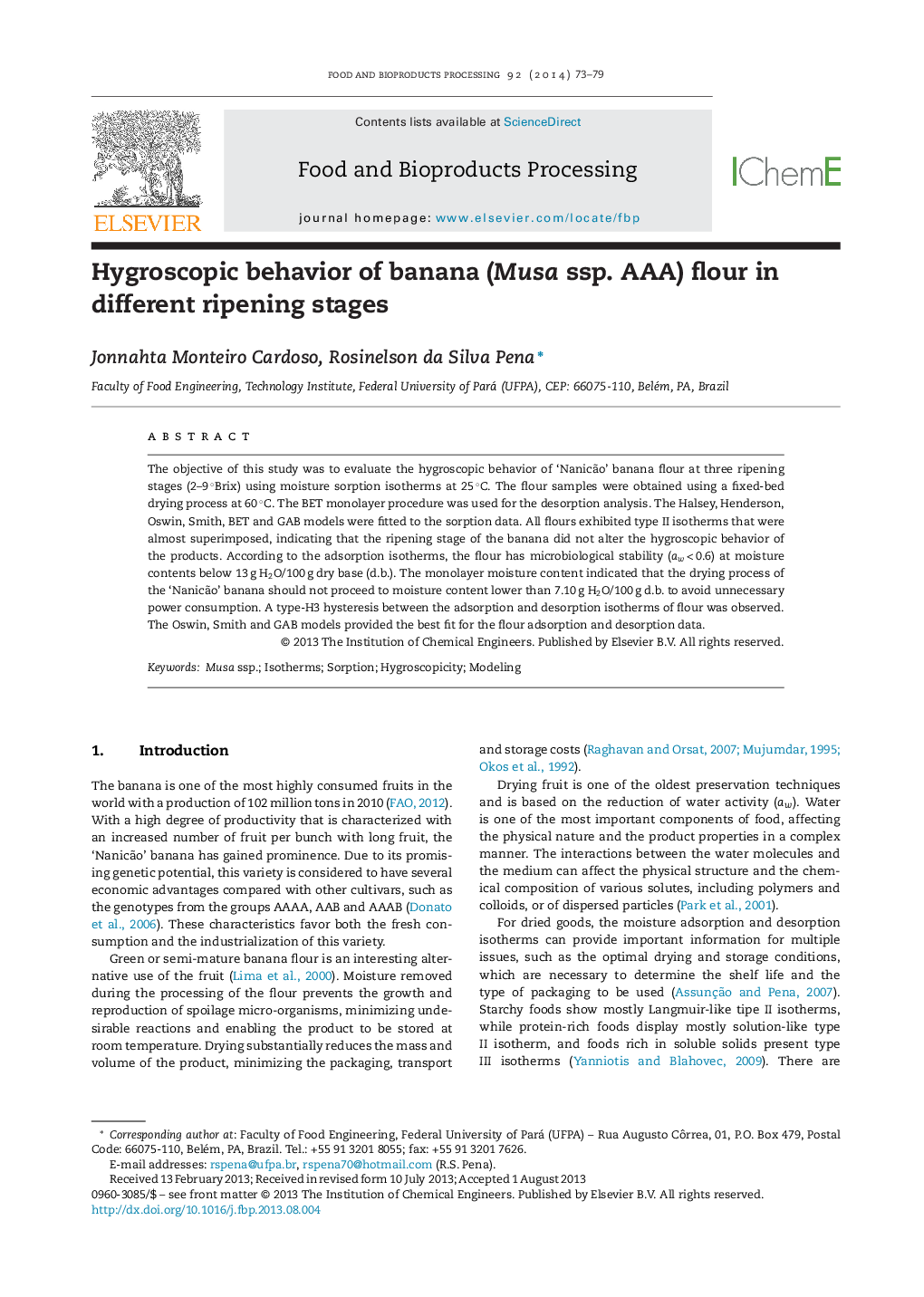| Article ID | Journal | Published Year | Pages | File Type |
|---|---|---|---|---|
| 19182 | Food and Bioproducts Processing | 2014 | 7 Pages |
•Hygroscopic behavior of banana (Musa ssp. AAA) flour was studied.•The banana flour presented Langmuir-like type II isotherms.•Hygroscopic behavior of banana flour was unaltered with the stage of ripening.•Type-H3 hysteresis loop was observed to the banana flour sorption isotherms.•Oswin, Smith and GAB models presented the best fit to flour sorption isotherms.
The objective of this study was to evaluate the hygroscopic behavior of ‘Nanicão’ banana flour at three ripening stages (2–9 °Brix) using moisture sorption isotherms at 25 °C. The flour samples were obtained using a fixed-bed drying process at 60 °C. The BET monolayer procedure was used for the desorption analysis. The Halsey, Henderson, Oswin, Smith, BET and GAB models were fitted to the sorption data. All flours exhibited type II isotherms that were almost superimposed, indicating that the ripening stage of the banana did not alter the hygroscopic behavior of the products. According to the adsorption isotherms, the flour has microbiological stability (aw < 0.6) at moisture contents below 13 g H2O/100 g dry base (d.b.). The monolayer moisture content indicated that the drying process of the ‘Nanicão’ banana should not proceed to moisture content lower than 7.10 g H2O/100 g d.b. to avoid unnecessary power consumption. A type-H3 hysteresis between the adsorption and desorption isotherms of flour was observed. The Oswin, Smith and GAB models provided the best fit for the flour adsorption and desorption data.
